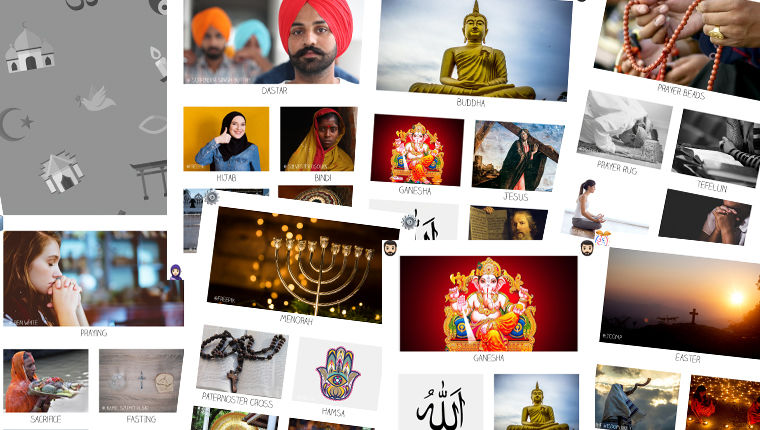
Alphabet Game
Game details
Do you see any offensive content? Do you suspect a violation of intellectual property? Don’t hesitate and let us now. We need your support in keeping this platform safe and trustworthy. Our StreetSmart staff will review all reported games and users two times per week and will evaluate if they violate our terms and conditions.

The religious quintet is a variation of the regular
‘quartet’ card game. The game is played with
three or more players. The objective of the game is to gather as much
quintets (sets of five cards) as possible. Each
card contains a large picture and a symbol in
the corner. If you print out the cards, there are four cards per A4 paper. Cut out the cards and put them on a pile.
The cards are shuffled and dealt evenly between
all the players. During the game, the cards are
held face up in a player’s hand, so the other players can't see the cards of the other participants.
The player to the dealer’s left starts the game by
asking another player if they have a certain card (example, card ‘Diwali’ from the quintet
‘Celebrations’) which would help the player create a quintet.
If the player does have that card, then the card is handed over. If the player doesn’t, then it
becomes his/her turn to ask for a card from another player.
When a player collected a complete quintet, or if a complete quintet was dealt, the cards creating
the quintet are placed in front of the player.
The game ends when all the quintets have been completed. The winner is the person with
the most completed quintets.
Important:
This game shows a lot of different aspects of different world religions: celebrations, pilgrimage destinations, holy books, external characteristics, religious objects, religious symbols, religious representatives, forms of prayer, religious actions, places of worship and religious leaders.
Below you can find some more information on all the different elements included in the Religious Quintet game. Of course, you are free to add more or less categories to the game.
CELEBRATIONS (confetti symbol):
PILGRIMAGE DESTINATIONS (black cube/ “Kaaba” symbol):
HOLY BOOKS (book symbol):
EXTERNAL CHARACTERISTICS (veil/ hijab symbol):
RELIGIOUS OBJECTS (gear symbol):
RELIGIOUS SYMBOLS (‘input symbols’ symbol):
RELIGIOUS REPRESENTATIVES (‘man with beard’ symbol):
FORMS OF PRAYER (‘folded hands’ symbol):
RELIGIOUS ACTIONS (‘play’ symbol):
PLACES OF WORSHIP (‘praying person below triangle’ symbol):
RELIGIOUS LEADERS (‘person raising hand’ symbol):
References:
https://www.myjewishlearning.com/article/kippah/
https://www.seiyaku.com/customs/crosses/paternoster.html
https://www.vox.com/2014/8/5/18002014/who-was-moses
https://www.britannica.com/topic/Ganesha
https://www.history.com/topics/religion/buddhism#section_2
https://dictionary.cambridge.org/dictionary/english/praying
https://www.britannica.com/topic/rabbi
https://www.bbc.co.uk/religion/religions/buddhism/people/dalailama_1.shtml
Learn more about world's major religions and their characteristics

Sander Degeling
Partnership Coordinator Africa & Asia StreetwiZe • Mobile School BE
16 February, 2020
Beautiful graphics! Perfect game to learn more about the major religions of the world, playable with younger kids

Joke Verreth
Partnership Coordinator Europe & Latin America StreetwiZe • Mobile School BE
23 March, 2020
Just print out the beautifully designed cards and you're ready to go! This game is a great way to learn more about the world religions in a fun way and to open up a discussion afterwards.
Don’t hesitate, share your feedback and help others to pick the right games. Tell us how it was and how the children reacted? Or do you have any advice for other players, a fun variation, a possible improvement?
![]()
We very much appreciate your effort in writing the review.

Game details

Game details

Game details
You can change these settings at any time in your Cookie-preferences . You can also view our Privacy policy .
Cookies saved